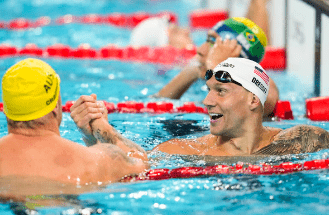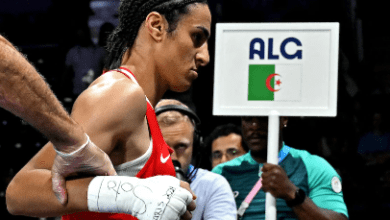Breaking into the Olympics: The Ultimate Guide to Breaking’s Historic Debut
Breaking, the electrifying street dance form often mistakenly referred to as “breakdancing,” has officially made its Olympic debut, with both the men’s and women’s events taking center stage on August 9 and 10 in Paris’s La Concorde, the same urban park that hosted BMX freestyle and skateboarding competitions. For those who may not be familiar with the world of breaking, the inclusion of this art form in the 2024 Olympics is not just a momentous event but also a chance to witness the purest expression of hip-hop culture on a global platform.
The Roots of Breaking: A Cultural Phenomenon
Breaking emerged in the 1970s in the Bronx, born out of the vibrant Black and Brown communities as an alternative to street violence. It was a way to resolve conflicts through dance battles instead of physical fights. The name “breaking” is derived from the “break” in music—the part of a song where the percussive elements take center stage. DJ Kool Herc, one of hip-hop’s founding figures, noticed that dancers would go wild during these breaks, leading him to extend these sections in his DJ sets. This innovation laid the groundwork for the development of breaking as a distinct dance style, complete with its own unique terminology, such as B-boys and B-girls.
Breaking is composed of four key elements:
- Toprock: The moves performed while standing up.
- Downrock: The footwork executed on the floor.
- Freezes: Gravity-defying poses that are held for a dramatic effect.
- Power Moves: Acrobatic spins and flips that showcase athleticism and strength.
Why Breaking, Not “Breakdancing”?
While the term “breakdancing” has been widely popularized, especially by the media, it’s considered a misrepresentation by those deeply rooted in the breaking community. The word carries connotations of commercialization and simplification of a culture that is rich in history and meaning. Victor “B-Boy Victor” Montalvo, one of the top contenders in the men’s breaking event, expressed that the term is often seen as “corny” within the community. For purists, breaking is not just a dance but a form of self-expression that embodies the essence of hip-hop culture.
How Breaking is Judged in the Olympics
The Olympic judging criteria for breaking are designed to capture both the athletic and artistic aspects of the dance. Competitors will face off in best-of-three rounds known as “throwdowns,” where they’ll have 60 seconds to improvise their routines. These battles are judged across five categories:
- Originality: The creativity and uniqueness of the moves, ensuring that dancers bring their own style and avoid copying others.
- Technicality: The level of skill displayed, including control, precision, and the difficulty of the moves.
- Vocabulary: The range and variety of moves used in the routine, ensuring that it doesn’t become repetitive.
- Execution: The cleanliness and precision of the performance, with deductions for any slips or mistakes.
- Musicality: How well the dancer’s moves sync with the rhythm and beats of the music.
Read also:- Wyndham Championship: Last Chance for FedExCup Playoff Spots
Each category accounts for 20% of the total score, making it equally important to excel in both the physical and musical elements of breaking. This balanced approach ensures that the dance’s artistic integrity is preserved while also highlighting the physical prowess required to compete at the highest level.
Team USA’s Breaking Contenders
Representing the United States in this historic Olympics event are four elite breakers: Sunny “B-Girl Sunny” Choi and Logan “Logistx” Edra in the women’s competition, and Victor “B-Boy Victor” Montalvo and Jeffrey “B-Boy Jeffro” Louis in the men’s event. These athletes will compete against top talent from over a dozen countries, making the competition a truly global showdown.
The Impact of Breaking’s Olympics Debut
Breaking’s inclusion in the Olympics is a landmark achievement for the dance form, marking its transition from street corners and underground battles to the world’s biggest stage. While some within the breaking community worry that this mainstream exposure could dilute the dance’s raw, authentic spirit, others believe that it will elevate breaking’s status and open new opportunities for dancers worldwide.
Luis “Prevail” Toledo, a seasoned breaker and community organizer, views the Olympic debut as a positive development. Despite concerns about commercialization, he believes that the increased visibility will bring more recognition to breaking as both an art form and a sport. Toledo, who has no Olympic aspirations but is deeply involved in grassroots breaking events, is optimistic that the attention generated by the Olympics will lead to more opportunities for practitioners at all levels.
When and Where to Watch Breaking at the Olympics
The breaking events will be broadcast live on Peacock and NBCOlympics.com, with a detailed schedule available to ensure fans don’t miss a beat. For those in New York, there will be a live watch party for the B-girl event at the Ladies of Hip-Hop studio in Queens, where attendees are encouraged to dance along during commercial breaks. On August 10, the men’s event will also be available for viewing, with additional watch parties and events taking place across the city.
Beyond the Olympics: Continuing the Breaking Journey
If the Olympic breaking events leave you wanting more, there are plenty of ways to stay engaged with the scene. The Red Bull BC One World Final, one of the most prestigious breaking competitions, is set to take place on December 7 in Rio de Janeiro and will be available to stream live. For those inspired to learn breaking, many dance studios offer beginner classes, and there are numerous practice sessions open to the public, particularly in New York.
Breaking is more than just a dance; it’s a global movement that continues to grow and evolve. Whether you’re a longtime fan or a newcomer, the Olympic debut of breaking offers a unique opportunity to witness the fusion of athleticism, artistry, and culture that defines this dynamic and ever-evolving art form.



